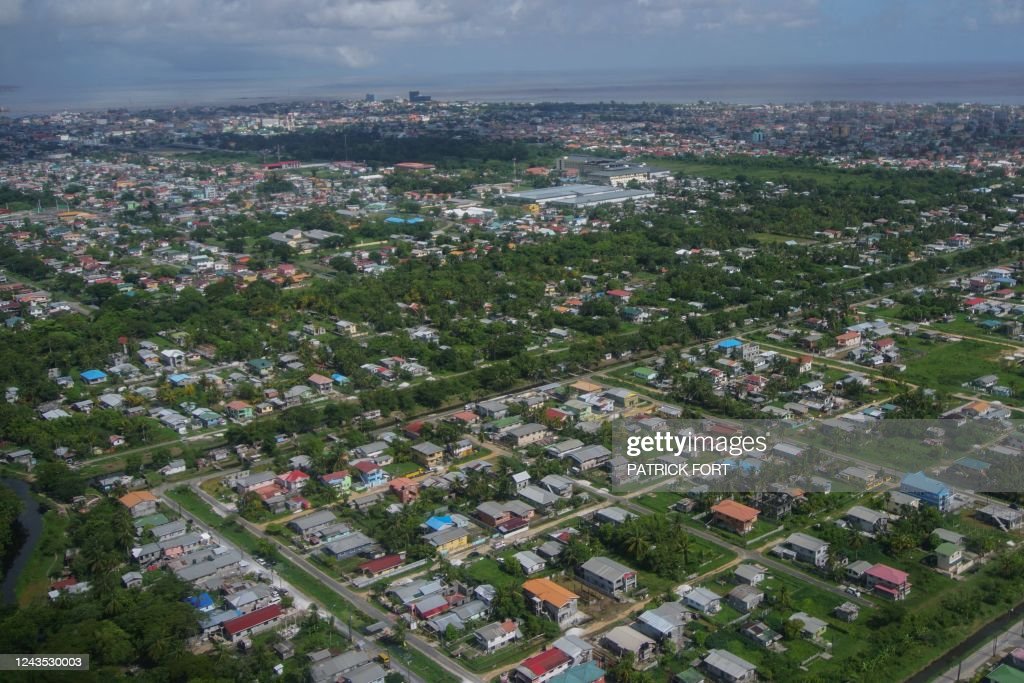News Americas, PORT-OF-SPAIN, Trinidad, Thurs. Nov. 23, 2022: Reliable power generation and distribution is critical to Guyana’s ability to provide essential services such as healthcare, communication and commerce. In less than a decade, its power generation sector must create systems and networks that support increasing demand, the decarbonization of power generation, and face challenges of the 21st century namely, possible cyberattacks with digitalization, and more frequent, extreme weather events.
Historically, Guyana’s power sector has depended almost exclusively on fuel oil (FO) imports for power generation. The cost of fossil fuels affects every facet of modern society that requires power generation and/or transportation. Countries that rely on imports of fossil fuels are exposed to market volatility and their development can be severely inhibited by high oil prices.
Guyana has taken steps to drastically reduce FO imports by pursuing its Low Carbon Development Strategy, (LCDS) with the gas to power initiative, using natural gas for electricity generation, and expansion of its energy mix to include renewable energy sources. The overall objective is to establish access to more reliable, cleaner energy. Investors in these project partner with government to boost energy security and economic growth by bringing these projects from concept to reality.
The International Energy Agency, (IEA) defines energy security as “the uninterrupted availability of energy sources at an affordable price.” Long-term energy security is achieved through timely investments to supply energy for economic development. Short-term energy security is the “ability of the energy system to react promptly to sudden changes in the supply-demand balance.” Guyana currently does not have short-term energy security, but strides are being made to offer long-term energy security through a mix of natural gas, hydropower and solar energy
In April, I outlined the justification for the Gas to Power initiative and it is useful to repeat it here:
“Guyana desperately needs a decentralized and flexible electricity grid with built in redundancy… Demand is forecasted to increase from current peak 126 MW to approximately 260 MW by 2025 then to just under 400 MW by 2035. Guyana Power and Light (GPL) has considered the conversion of existing heavy fuel oil power plants to dual-fired plants which will be designed to consume natural gas as the primary fuel and use fuel oil as a back-up. GPL secured debt financing from the Government of Guyana for the construction of the Garden of Eden project which adds 46.5 MW to the grid to improve system reliability, enhance its capacity to adequately respond to peak demand load in the short to medium term and cut CO2 emissions by 50% compared to fuel oil.”
Guyana’s power sector must meet the demand for the shift from centralized systems of thermal power plants. The inclusion of offshore natural gas bolsters Guyana’s energy security by providing cleaner energy for the growing domestic and industrial power demand. Additionally, there will be a more attractive environment for investment with lower energy cost and greater reliability of supply.
Energy and Power Systems Security
The International Energy Agency’s (IEA) 2020 report on Power Systems Security concluded that “governments, industries and other stakeholders will need to improve their frameworks for ensuring electricity security through updated policies, regulations and market designs.”
This is in keeping with the objective of the Caribbean Energy Security Initiative (CESI) which “aims to boost energy security … through a focus on improved governance, increased access to finance, and strengthened coordination among energy donors, governments, and stakeholders.”
Under improved governance, the CESI specifically is considering power systems through “targeted technical and policy assistance programs… to put in place the legal, regulatory, and policy frameworks required to introduce new technologies and approaches to managing electricity load in small island markets.”
It is evident even in the objectives set out for this regional initiative that good governance is a linchpin for Guyana’s progress. So how can the CESI objectives be achieved through updated policies and regulations for power systems in Guyana?
Cross Cutting Shortcomings
Getting the natural gas to shore for power generation is one link in the chain. Other linkages include a nationally appropriate power generation system, a modernized electricity grid for reliable power distribution and a billing system to accommodate market needs. The following is a single instance that illustrates the lack of linkages among policy, regulation, technology application and market impact in meeting the demand for electricity.
Earlier this year, the Q&A session of the American Chamber of Commerce, (AmCham Guyana) Roundtable Discussion was almost dominated by the keen interest in a having a Feed In Tariff, (FIT), implemented. FIT is a policy mechanism that incentivizes investment in renewable energy by entering into long term contracts for the transfer of excess renewable electricity from private producers to the grid. In other words, individuals can sell electricity produced by rooftop solar photovoltaic cells to the national grid. FIT can be beneficial overall by adding redundancy to the electricity generation system and increasing the national supply of electric power more quickly.
However, Mr. Bharat Dindyal, CEO, Guyana Power and Light, (GPL) admitted that there was no legislative provision for FIT. If such legislation was in place, there would be very limited opportunity for stakeholders to sell just 15MW of energy to the grid. Further, the customer billing system is not configured for the financial accounting needed to facilitate payment to producers. Dindyal went on state that an estimated 3 billion USD of investment would be required in the next decade to upgrade and expand the current power transmission and distribution (T&D) system.
This situation gives clear evidence of the cross cutting of shortcomings in governance, access to finance and coordination with potential stakeholders that can hinder Guyana’s power security. The power sector needs to facilitate input of multiple renewable energy producers and ensure that energy security is built into the system.
Improved governance in this instance means low carbon development policy must be supported by legislation, data and opportunity for public participation in the energy market. FIT will make renewable energy more attractive to many who may be reluctant to invest in the required infrastructure and equipment. GPL, with government support, needs to identify stakeholders interested in providing energy to the grid and coordinate efforts to eliminate shortcomings.
FIT legislation and regulation are areas that the government can work with regional bodies such as the Caribbean Centre for Renewable Energy and Energy Efficiency, (CCREEE), to strengthen coordination with donors and other CARICOM members, such as Barbados, who have pursued the similar objectives. The CSEI focus on governance is an opportunity for Guyana to bolster its strategy of low carbon development.
EDITOR’S NOTE: Dr. Lorraine Sobers is a Fulbright Scholar currently lecturing at the University of the West Indies, St. Augustine. Dr Sobers has a BS in Chemical Engineering and postgraduate degrees, MS and Ph.D., in Petroleum Engineering from Texas Tech and Imperial College, London respectively. She has 19 years’ experience in the energy sector specializing in Carbon Capture and Storage (CCS). Dr Sobers is the Project Coordinator for CO2 Emission Reduction Mobilisation, (CERM) Project and a Fellow of the Caribbean Policy Consortium.










